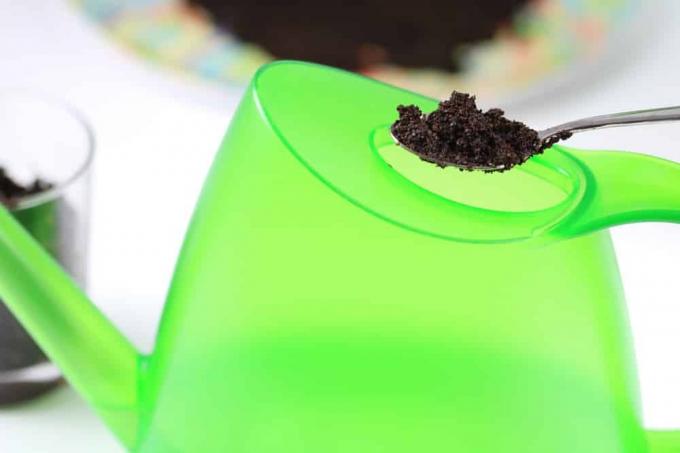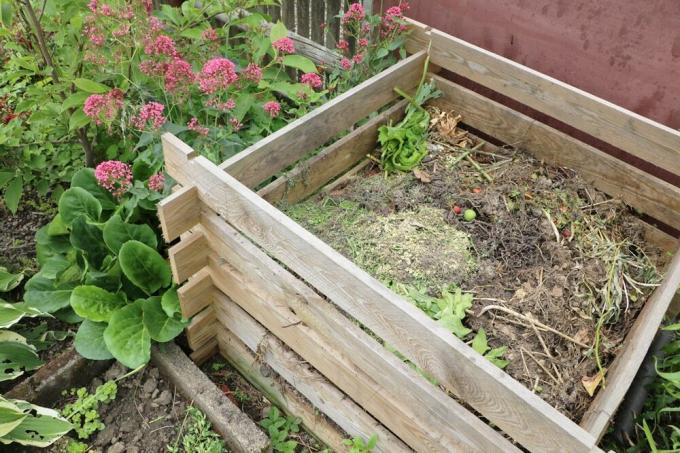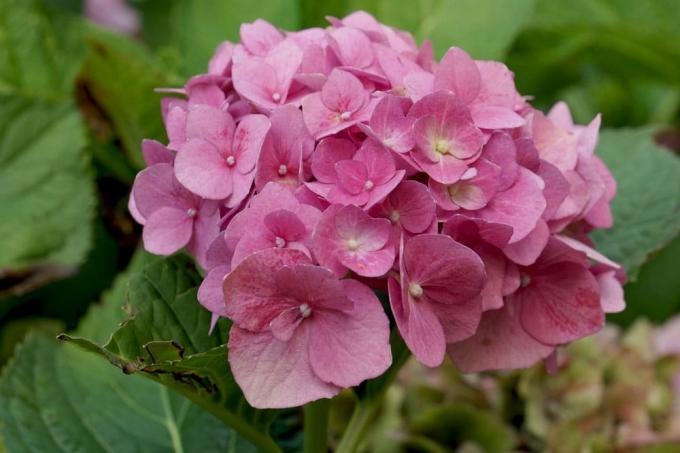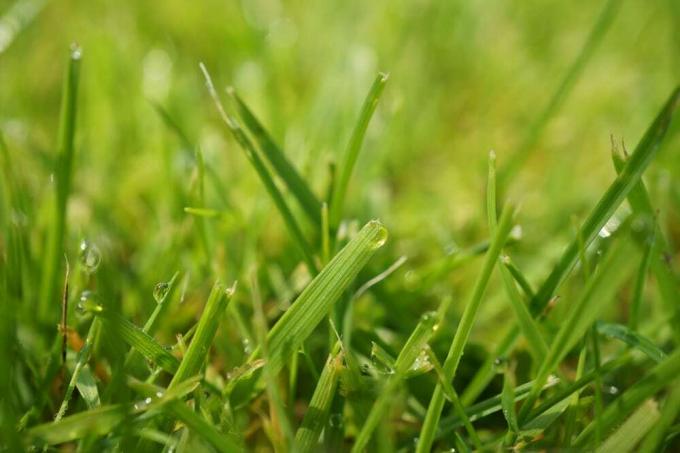

Table of contents
- ingredients
- Nitrogen
- phosphorus
- potassium
- tannic acid and antioxidants
- dry
- storage
- compost
- fertilizer
- basic earth
- Hard water
- fitness
- dosage and frequency
- deterrent
- Conclusion
If you want to dry coffee grounds as flower fertilizer, you are using a resource that is often wasted. Valuable ingredients but also a potentially deterrent effect on pests are in the coffee residues. In order for these to be used profitably, however, they must first be suitably prepared. In the following, interested hobby gardeners can find out what is important and what coffee grounds can be used for in detail.
ingredients
Coffee is valued by humans primarily for its caffeine content, but plants also have more to offer. The most important ingredients that also make it a high-quality fertilizer are:
- Nitrogen
- phosphorus
- potassium
There are also tannic acids and antioxidants, which can also have a positive effect on the growth and health of plants.
Nitrogen
Nitrogen is particularly beneficial for leaf growth and is therefore contained in many fertilizers. This valuable ingredient is required by all plants. The coffee grounds already contribute to plant health through this substance.
phosphorus
From the formation of the flowers to the ripening of the fruit - this is where plants depend on phosphorus. The mineral is therefore of crucial importance, especially for flowering plants, vegetables and fruit.
potassium
In order for plants to be and remain stable, they need healthy cell walls. Potassium is required for their formation. The mineral thus contributes directly to stability and stable growth.
tannic acid and antioxidants

Tannic acids have a slightly acidic effect, i.e. they have a neutralizing effect on limescale. That can be an advantage. Antioxidants, on the other hand, serve to protect cells and can reduce the risk of damage – for example from environmental toxins, pollutants, but also solar radiation.
When coffee grounds are used as fertilizer, these and other substances, such as caffeine, are said to have a stimulating and protective effect, just as they do in humans.
dry
Anyone who owns a fully automatic coffee machine or has ever forgotten the filter bag in the machine knows how quickly coffee grounds go moldy. Of course, it can then no longer be used as fertilizer. It is therefore urgently necessary to prevent the formation of mold, which means that the moist powder simply has to be dried. There are various options available for this purpose:
- Spread the coffee grounds out thinly, for example on a baking sheet or in a flat, open container, and air dry
- Crumble pressed coffee grounds, e.g. from fully automatic or espresso machines, and dry on a plate
- Heat on a baking tray in the oven at 50 to 100°C for half an hour
- Microwave for at least 5 minutes on medium power
It is important that there is no residual moisture in the coffee grounds afterwards, otherwise, despite the treatment, they will be a suitable breeding ground for mold spores. This is particularly annoying when large quantities have already been collected and carefully stored - but the mold then becomes unusable.
storage
Whether coffee grounds are produced every day or only a few times a week - as a fertilizer, they are usually not used immediately. Especially when used in the garden, the use only seems to be worthwhile with larger quantities. For this purpose, the fertilizer from the coffee machine is finally also dried.
In addition to this measure, however, it must also be stored correctly. It depends on the following points:
- Dry the coffee grounds properly. It is best to crumble it very finely and lay it out thinly. It should then be powdery again and trickle without problems, must not fill up with moisture.
- Allow the dry coffee grounds to cool well before pouring into an airtight container. Do not close the jar if a damp mist is still visible on the inner surface.
- Store the container closed, dry, cool and dark - for example in the refrigerator.
Tip:
If the coffee grounds accumulate daily and are used relatively quickly as fertilizer, they do not have to be preserved in a container. However, care should be taken to ensure that it can dry sufficiently and remains dry.
compost

The easiest way to use coffee grounds as a versatile fertilizer and to use its valuable ingredients is to put it in compost or used soil. However, the coffee grounds should not be used when they are wet, because then there is a risk of mold forming.
It also needs to be well distributed in the compost or substrate for the same reason. If it is simply thrown up as a layer on top, fungal spores could still spread on it and render the soil unusable.
fertilizer
Coffee grounds can be used as a direct fertilizer in two ways. Both variants are common. On the one hand, it can be used dry, but should then be slightly worked into the soil or only spread very thinly on it. Repotting can be used for potted and tub plants. In the garden or when planting outdoors, the dry coffee grounds can be spread thinly around the plants and the soil lightly hooked.
The second variant is liquid fertilization with coffee grounds, which you do not have to do in advance dried - provided it is used directly, ideally directly from the coffee machine into the irrigation water given, will. However, it should not be too much coffee grounds. One to two tablespoons per liter of irrigation water are sufficient. So that the greatest possible benefit can be drawn from it, the coffee grounds and water mixture should be at least a few hours or even a day and stirred before watering become.
basic earth
In addition to being used as fertilizer, the coffee grounds can also be used to slightly acidify or neutralize very basic soil. It is used for this purpose due to the tannic acids it contains. Of course, it should be noted that the nutrient content of the substrate also increases.
Hard water
Just like alkaline earth, hard water is also “hard”. Some plants do not get this pH value range. If the plants need soft water or an acidic or neutral substrate, coffee grounds can do a good job. It can be added to the irrigation water or the soil as described.
Tip:
In order to adjust the dosage if necessary, not to risk acidification and to create optimal conditions for the plants, the pH value of the soil should be checked regularly.
fitness
Due to the slightly acidifying effect, coffee grounds are particularly suitable as flower fertilizer for plants that prefer an acidic pH value. Among other things:
- azalea
- Berry
- angel trumpet
- Cucumber
- hydrangea
- pumpkin
- rhododendron
- rose
- tomato
- zucchini

Whenever soil is too alkaline or water too hard, the coffee grounds can also be used as fertilizer. With soil that is already very acidic, however, attention should be paid to the compatibility of the plants in order not to risk acidification.
dosage and frequency
Soil and plants can hardly be over-fertilized with coffee grounds as long as they are not applied in very large quantities or too frequently. As a rule of thumb, houseplants can be fertilized with coffee grounds twice a year and garden plants up to four times a year. The additional nutrient should be given during growth.
It is also important that the coffee grounds are not worked into the substrate by the kilo, even without the risk of over-fertilization. Even if the nutrients do not become problematic, the risk of the soil becoming moldy increases. With substrates that are already moist anyway, the coffee grounds should be used sparingly as fertilizer. In dry soils it can be a little more. In general, it makes sense to initially only use a mixing ratio of one part coffee and ten parts earth and only increase the amount when this mixture is well tolerated.
Tip:
On the compost it behaves a little differently with the coffee grounds. It can be a little more here. Soil organisms that are useful for decomposition are even attracted to it. However, as mentioned, it should be well distributed and not applied as a layer.
deterrent
Due to its valuable ingredients, coffee grounds not only have good properties as flower fertilizer, they are also said to have other positive effects.
For example, it should keep certain types of snails away and could thus prove itself as a deterrent border around the vegetable patch or individual plants. The coffee grounds do not offer absolutely safe and guaranteed protection, but it is worth trying. If it does not bring the desired success, it can always be worked into the soil as a fertilizer.
Incidentally, a similar effect can be achieved with coffee grounds in cats. Since they don't particularly like the smell, beds should be able to be protected from being used as litter boxes. But beware: some velvet paws simply jump over the drawn border made of coffee powder.
If wasps disturb eating outdoors again, the coffee grounds should also be able to do a good job. It is lit in a flat, fireproof bowl and used as incense. Although it no longer smells very pleasantly of coffee, it is said to efficiently keep the wasps away.
Conclusion
Coffee grounds can be used in many ways as vegetable and flower fertilizer and even beyond that in the garden. All you have to do is ensure that the coffee grounds are properly prepared, stored and used in appropriate quantities so that there is no increased risk of mold growth.
 garden editorial
garden editorial I write about everything that interests me in my garden.
Learn more about fertilizer

Lawn lime: Lime against moss in the lawn
As soon as moss appears in the lawn, many a hobby gardener becomes restless - because soon the moss carpet can take over entire areas. With lawn lime, however, the unwelcome visitor can be skilfully put in his place.

Build your own Bokashi bucket | DIY instructions
Most of the kitchen waste goes on the compost or in the organic bin to add it back to nature's cycle. But there is a way to gain valuable fertilizer beforehand. We show how easy it is to build a Bokashi bucket and use it to obtain liquid fertilizer on the balcony or even in the apartment.

These 8 plants don't like coffee grounds as fertilizer
Hobby gardeners swear by the effect of the coffee grounds. It is fertilizer, snail protection, soil conditioner and cat deterrent all at the same time. In addition, it is free of charge and occurs daily in the household. Most plants are strengthened, but some are sensitive to the addition of coffee. We clarify.

Fertilize Christmas roses properly: 11 effective home remedies
Christmas roses are special flowers because, unlike almost all other perennials, they bloom in winter. They are insensitive and frost-hardy, and they can also multiply independently. Here you can find out what needs to be considered when fertilizing.

Lawn Bokashi: 6 steps to a cheap & natural fertilizer
The name Bokashi is still largely unknown. This method of using grass clippings comes from Japan. With a little preparation and a special form of processing, the clippings become valuable, nutrient-rich fertilizer that can be easily distributed in the garden.

Wood ash as fertilizer | These 70 plants love barbecue and charcoal
Home gardeners with a fireplace or tiled stove receive a natural fertilizer for free. Charcoal and charcoal leave behind a dusty residue that is packed with valuable nutrients. Read here under what conditions wood ash is suitable as a fertilizer. These 70 plants benefit from the unorthodox nutrient supply.



